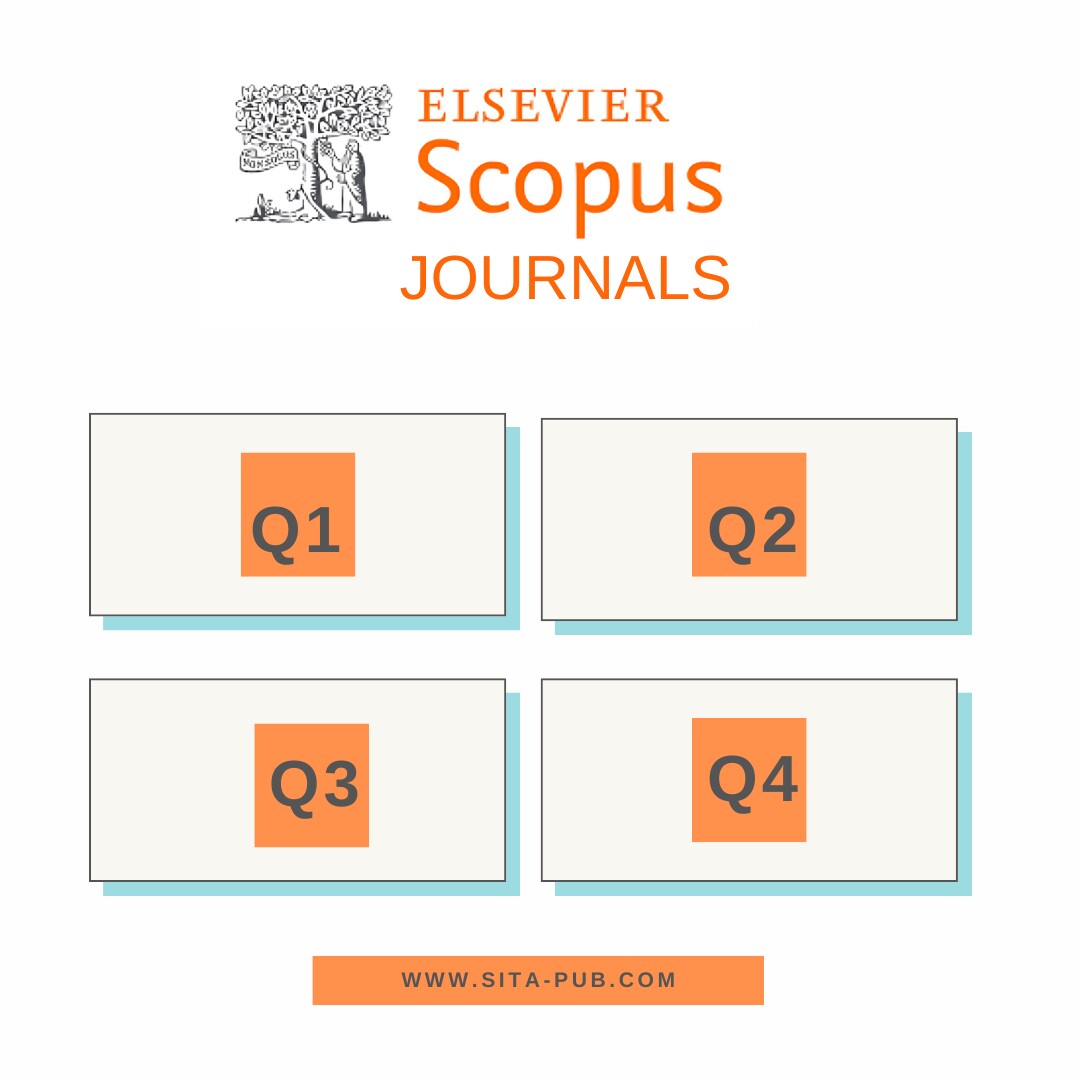What are Q1, Q2, Q3, and Q4 journals?


Scopus is a large database that lists many scientific, technical, and medical journals. It helps researchers find articles, see citation data, and look at various metrics to assess the quality and impact of research.

Wide Coverage: Scopus includes millions of articles from many different fields, making it a valuable resource for researchers.
Citation Analysis: Scopus tracks how often articles are cited. This helps researchers see how their work is being used by others and analyze trends over time.
Author Metrics: Scopus calculates metrics like the h-index, which shows how productive a researcher is and how often their work is cited.
Journal Metrics: Scopus provides scores for journals, like the CiteScore, which helps researchers understand journal quality.
Search Options: Scopus has advanced search features, making it easy to find specific articles, authors, or topics.
Scopus divides journals into four quartiles based on their citation metrics. This helps researchers see how a journal compares to others in its field.
Definition: Q1 journals are in the top 25% of journals based on citations and impact.
Characteristics: These journals are very selective and known for publishing high-quality research. They have strict peer-review processes, and articles published here usually receive many citations, boosting a researcher’s visibility.
Definition: Q2 journals are ranked in the 25-50% range.
Characteristics: Q2 journals are still reputable but may have slightly easier acceptance criteria than Q1. They are good for researchers who want quality publishing without the intense competition of Q1 journals.
Definition: Q3 journals fall in the 50-75% range.
Characteristics: These journals generally have a broader acceptance policy, making it somewhat easier to publish. They still provide valuable platforms for sharing research but may not be as influential.
Definition: Q4 journals are in the bottom 25% of journals.
Characteristics: These journals usually have the lowest impact factors and acceptance criteria. While easier to publish in, they offer less visibility and lower citation counts.

Selecting the right journal for your research is important and should depend on your goals and needs.
Many universities have specific publishing requirements. Some may require students and faculty to publish in Q1 or Q2 journals for graduation or promotion. If this is your situation, it is essential to aim for these higher quartile journals.
Think about what you want to achieve with your publication:
Building a Strong Academic Profile: If you want to establish yourself in academia, aim for Q1 or Q2 journals. Publishing in these can enhance your reputation and open doors for future opportunities.
Sharing Preliminary Findings: If you have early research or less extensive work, consider Q3 or Q4 journals. These journals may provide a quicker route to publication.
Field of Study: Different fields have different standards for journal impact. In some areas, Q2 or even Q3 journals may still be respected. Research the norms in your field to make a smart choice.

Generally, it is easier to publish in Q3 and Q4 journals compared to Q1 and Q2. Here are a few reasons:
Less Competition: Q3 and Q4 journals receive a wider range of submissions, leading to less competition. This can increase your chances of getting accepted.
Broader Acceptance Criteria: These journals may have less strict peer-review processes, making it easier to publish your work.
Faster Publication Times: Q3 and Q4 journals often have quicker review and publication times, allowing you to share your findings sooner.
While it’s easier to publish in these journals, make sure they maintain quality and relevance to your field. Always check the journal’s reputation and previous publications.
You can check the rankings and credibility of journals through several online resources:
Scopus: Search for the journal title in Scopus to find its quartile ranking and other metrics.
Web of Science: This platform provides detailed journal impact factors and quartile rankings.
Journal Citation Reports (JCR): Offered by Clarivate Analytics, JCR provides impact factor data and rankings for journals.
Google Scholar Metrics: This tool gives h-index and citation data for journals, helping you understand their influence.
Directory of Open Access Journals (DOAJ): This database lists reputable open-access journals and helps identify quality venues.
Cabell's Journalsytics: This resource provides journal analytics, including acceptance rates, helping you identify potential journals for submission.
Scimago Journal Rank (SJR): The Scimago website offers journal rankings based on citations and other metrics. It provides insights into the journal's impact and quality, making it a valuable tool for researchers.
By using these resources, you can assess the rankings and reputation of journals in your field, making it easier to choose the right one for your research.
Understanding Scopus and the quartile classification of journals is essential for researchers who want to publish effectively. By recognizing the differences between Q1, Q2, Q3, and Q4 journals, you can make informed decisions that align with your academic goals. Whether you are aiming for high-impact publications or looking to share preliminary findings, knowing the academic publishing landscape will help you navigate your research career successfully.

If you need a list of Scopus journals that match your research needs, we can help! Contact us today, and we will provide you with a customized selection of journals based on what you're looking for. Make sure you find the best fit for your work—reach out to us now!
If you have any questions, inquiries, or would like to learn more about our services, please don't hesitate to reach out to us. Our dedicated team is ready to assist you.